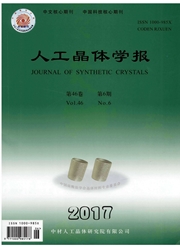

 中文摘要:
中文摘要:
用原子力显微镜研究了在不同的条件下采用固态磷源分子束外延技术生长的InP同质外延薄膜的表面形貌。在样品的表面观察到不稳定三维岛状生长。其主要原因有两种,第一种是生长温度较低时,由于吸附原子受到附加的ES台阶边垒的阻碍作用,使扩散运动不能向台阶下面运动,而在台阶上面形成小丘,第二种是生长温度较高或V/Ⅲ较低时,因生长中缺磷造成In的堆积而产生。在合适的生长条件下,可获得了光滑的2D层状生长。
 英文摘要:
英文摘要:
The mound formation during molecular beam epitaxy of InP with variations of growth temperatures and V/Ⅲ beam equivalent pressure (BEP) ratios is studied by means of atomic force microscopy. Three-dimensional (3D) mounds are observed in two kinds of growth conditions. One is at low growth temperature, the origin of mound formation can be attributed to an intrinsic growth instability of a singular surface in the presence of so-called Ehrlich-Schwoebel (ES) step-edge barrier, which inhibit the downward movement of adatoms at surface step-edges. The other is at high temperature,or at low V/Ⅲ (BEP) ratio, the reason of mound formation is related to phosphorus deficiency. Under suitable growth conditions, two-dimensional (2D) layer-by-layer growth can be obtained.
 同期刊论文项目
同期刊论文项目
 同项目期刊论文
同项目期刊论文
 期刊信息
期刊信息
